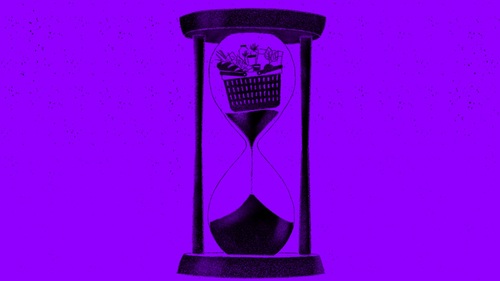Today it's really not about getting 'the traffic', but it's more about getting 'the relevant traffic'!
Both Zomato & Swiggy clearly understand this. Hence, they have gone all out with their SEO efforts to get millions of organic visits every month.
Now, we've covered in detail how Zomato organizes its individual restaurant pages. But, Zomato goes even a step further to rank for most niche keywords.
So, we'll be exploring Zomato's search intent strategy & Swiggy's SEO strategy to get 5M+ traffic! Read on!
Zomato: The restaurant reviews website?
Now, in part 1 of this article, we have in detail explored Zomato's top sub-folders. Ultimately, we established that the final restaurant URL structure looks something like this:
URL Structure: zomato.com/[city-name]/[restaurant-name]-[location-name]
These pages are very cleverly designed to target different types of keywords.
How? Well, let's break it down.
Role of Search Intent!
Just to refresh your memory, search intent tells you what kind of results the user is looking for.
To understand how Zomato leverages this, let's look at a restaurant page.

On this page, you'll find information about the given restaurant, review, their menu, photos & an option to order online. All these are different pages that show up for particular search queries for that restaurant.
1) Review
- URL structure ➝ /[city-name]/[restaurant-name]-[location-name]/reviews
- According to Ahrefs, these review pages alone get 223K traffic
2) Order
- You have two sets of pages in the order category.
- URL structure 1 ➝ /[city-name]/order-food-online
- URL structure 2 ➝ /[city-name]/[restaurant-name]-[location-name]/orders
- In total, these pages get a traffic of 591K
Similarly, you have /menu, /photos & /info page.
Now, it's pretty much simple.
- When you Google "Mainland China reviews", you'll come across this Zomato review page ➝ www.zomato.com/mumbai/mainland-china-malad-west/reviews.
- Whereas, if you were to simply type "order Chinese food online", the first organic result will be this /order-food-online page ➝ https://www.zomato.com/mumbai/order-chinese-online.
The pages for non-Indian locations don't have the order feature. So outside India, all the traffic comes from pages review & info pages. Out there, Zomato is just a restaurant directory/review site, at least for now.
What does Swiggy's strategy look like?
Now, coming to Swiggy — let's first look at their top subfolders!

Mainly, Swiggy has 2 distinct sets of sub-folders — the /restaurants folder and /city-name folder.
Some of the top subfolders are:
➝ /restaurants — 133K
➝ /delhi — 78K
➝ /chennai — 76K
Now, Swiggy majorly has 2 types of sub-folders:
1) /restaurants
Mainly, all the restaurant pages are organized under this subfolder.
URL structure ➝ swiggy.com/restaurants/[restaurant-name]-[location]-[city]-[code]
2) /[city-name] (example, /delhi, /chennai etc.)
Now, what exactly is the point of having subfolders for different cities?
Well, the /mumbai subfolder on Swiggy links to different zones that Swiggy operates in, in that city.
So, you have:
URL structure ➝ /[city-name]/[zone]
The only visible organizational structure for these restaurant pages is the code assigned to each page. Basically, it means that Swiggy has indexed all the restaurants in their directory, and their URLs reflect the same.
So, what do we learn from these two approaches?
Just looking at Swiggy's & Zomato's SEO numbers you can clearly tell that Swiggy is trailing behind when it comes to SEO.
If we only consider India, Zomato ranks at the 1st position for 102K keywords among 3M. On the other hand, Swiggy ranks at the 1st position for only 10K keywords among 500K. These of course majorly include brand keywords.
Clearly, Zomato is doing something right. And, that's definitely with respect to how they organized their site & their emphasis on capturing different search intent-based keywords.
1) URL structure
A URL to a page is essentially meant to be like the address to that particular page on your website. So, if you consider your website as a city. Then the cities are divided into zones & sub-zones, to create accurate addresses. Subfolders play a similar role as zones in the case of your website.
A good URL structure (and an organized website) helps Google understand what your website's page is all about.
In fact, Google recommends you have a proper navigation structure. So, web-crawlers understand what role each page plays in the big picture!
Now, even though, Swiggy's pages are not organized into a proper parent-child structure like Zomato, all the /city-name pages and /restaurants pages are internally linked together. So, that should help the authority juice flow throughout the website.
But, still having a proper hierarchy-based URL structure is recommended.
2) Focus on Search Intent
Zomato has designed its pages and overall site such that it can capture a huge scope of keywords & accurately target their search intent. Especially, since these are online food delivery sites, they should definitely aim to capture users searching for "online deliver in ..." on Google.
Zomato's /order pages do this job very well. But, what's funny is that Zomato doesn't even allow you to order directly order from the browser. On the order page, it will point you towards its mobile app to place the order!
Weirdly, Swiggy does allow you to place an order directly from the browser, but it doesn't target these keywords.
3) Blog
Apart from these pages, both Zomato & Swiggy also write blogs.
- Zomato has a dedicated sub-folder for its blogs ➝ zomato.com/blog ➝ Traffic = 10.1K
- While Swiggy organizes its blogs on a subdomain ➝ blog.swiggy.com ➝ Traffic = 3.7K
Zomato & Swiggy barely get any organic traffic for their blogs. In fact, it seems like they have not tried to optimize their blogs for any keywords at all. So, there's definitely a huge scope for both parties on this front.
Ultimately, in the war of SEO, just by the numbers, the rank board currently reads:
Zomato - 1, Swiggy - 0.
Zomato clearly wins today!
But, there's good scope for both brands to further capitalize on SEO, and Swiggy is known to catch up real quick. So we'll have to wait & watch where these brands eventually end up in the SEO game!






